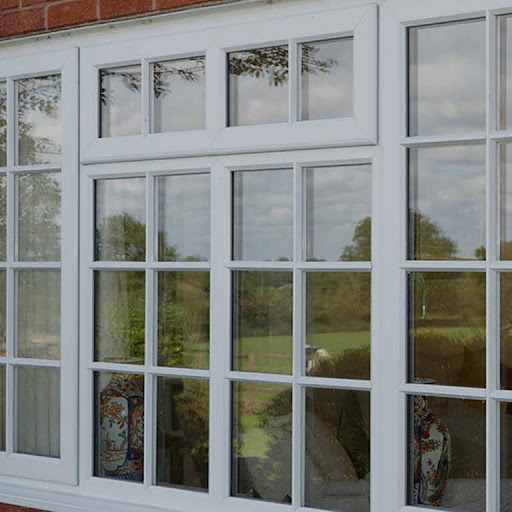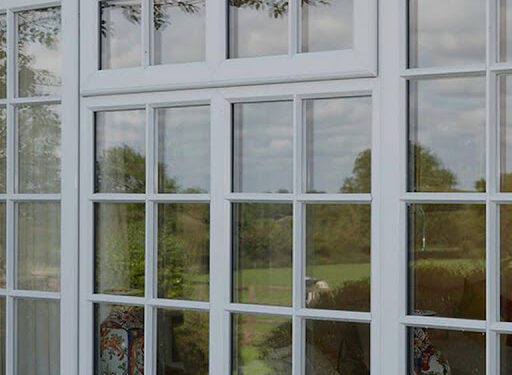In an era where sustainability is a paramount concern, every aspect of our lives is under scrutiny for its environmental impact. When it comes to our homes, one significant contributor to energy consumption and carbon emissions is the type of windows we choose. This brings us to the critical discussion of double glazed windows and their environmental implications. In this in-depth exploration, we will delve into the environmental impact of double glazed windows from a green perspective.
1. Energy Efficiency and Reduction in Carbon Footprint
The environmental benefits of double glazed windows are substantial. At the heart of their impact is their unparalleled energy efficiency. Double glazed windows consist of two panes of glass with a sealed gap between them, which acts as a thermal insulator. This insulation property reduces heat transfer, keeping interiors warmer in winter and cooler in summer without overtaxing heating and cooling systems.
By creating a more stable indoor environment, double glazed windows reduce the need for constant temperature adjustments. As a result, energy consumption is lowered, leading to a direct reduction in the carbon footprint of a household. According to estimates, heating and cooling buildings accounts for nearly 40% of global energy consumption. Opting for double glazed windows is a tangible step toward decreasing this energy demand and mitigating greenhouse gas emissions.
2. Minimizing Heating and Cooling Needs
The energy efficiency of double glazed windows is particularly impactful in colder climates. Traditional single-pane windows allow significant heat loss, necessitating more intensive heating during winter months. With double glazed windows, this heat loss is dramatically reduced, thereby decreasing the frequency and duration of heating requirements. By minimizing the need for energy-intensive heating and cooling, these windows play a crucial role in sustainable living.
3. Reduction of Noise Pollution
The environmental impact of double glazed windows isn’t limited to energy conservation alone. These windows also contribute to reducing noise pollution, another vital aspect of green living. The insulation properties that make double glazed windows energy-efficient also dampen external noise, creating a quieter and more peaceful indoor environment. This, in turn, enhances overall well-being and reduces the stress associated with constant exposure to noise pollution.
4. Extended Lifespan and Reduced Waste
From a lifecycle perspective, double glazed windows also offer an environmental advantage. When installed and maintained properly, they tend to have a longer lifespan compared to traditional single-pane windows. The durability of these windows means that they need to be replaced less frequently, resulting in fewer materials being used and less waste being generated over time.

5. Consideration for Frame Materials
While the glass component of double glazed windows has significant environmental benefits, it’s crucial to also consider the frame materials, particularly uPVC (unplasticized polyvinyl chloride). Opting for sustainable and eco-friendly frame materials further enhances the green credentials of double glazed windows.
uPVC Frames: A Sustainable Choice
uPVC frames have gained popularity as a sustainable alternative to traditional frame materials. They offer a range of environmental advantages, making them an appealing choice for those seeking eco-friendly window solutions.
Firstly, uPVC frames have a lower carbon footprint in their manufacturing process compared to materials like aluminium or timber. uPVC production requires less energy and generates fewer emissions, contributing to reduced environmental impact. Furthermore, these frames are highly durable and require minimal maintenance over their lifespan, minimizing the need for frequent replacements and conserving resources.
Additionally, uPVC frames are fully recyclable. At the end of their useful life, these frames can be recycled into new uPVC products, reducing waste and preventing materials from ending up in landfills. This closed-loop recycling process aligns with the principles of a circular economy and promotes sustainable resource management.
Balancing Aesthetics and Sustainability
Choosing uPVC frames doesn’t mean compromising on aesthetics. Modern uPVC frames come in various colours and finishes that mimic the appearance of traditional materials like wood, allowing homeowners to enjoy the visual appeal of heritage windows while making an environmentally conscious choice. This blend of aesthetics and sustainability exemplifies the progress that the construction industry has made toward more eco-friendly options.
Certifications and Standards
When selecting uPVC frames, it’s advisable to look for products that adhere to recognized industry standards and certifications for sustainability. These certifications often attest to factors such as energy efficiency, recyclability, and low environmental impact. By choosing uPVC frames that meet these standards, you can have confidence that your windows contribute to a greener home.
Conclusion
In the broader context of sustainable living, the environmental impact of double glazed windows is noteworthy and positive. These windows go beyond mere aesthetics and offer tangible benefits for the planet. By significantly reducing energy consumption, lowering carbon emissions, and improving overall living conditions, double glazed windows are a green investment that pays off in the long run. As we strive for a greener future, the choice to install double glazed windows emerges as a responsible and impactful decision that contributes to a more sustainable world.






